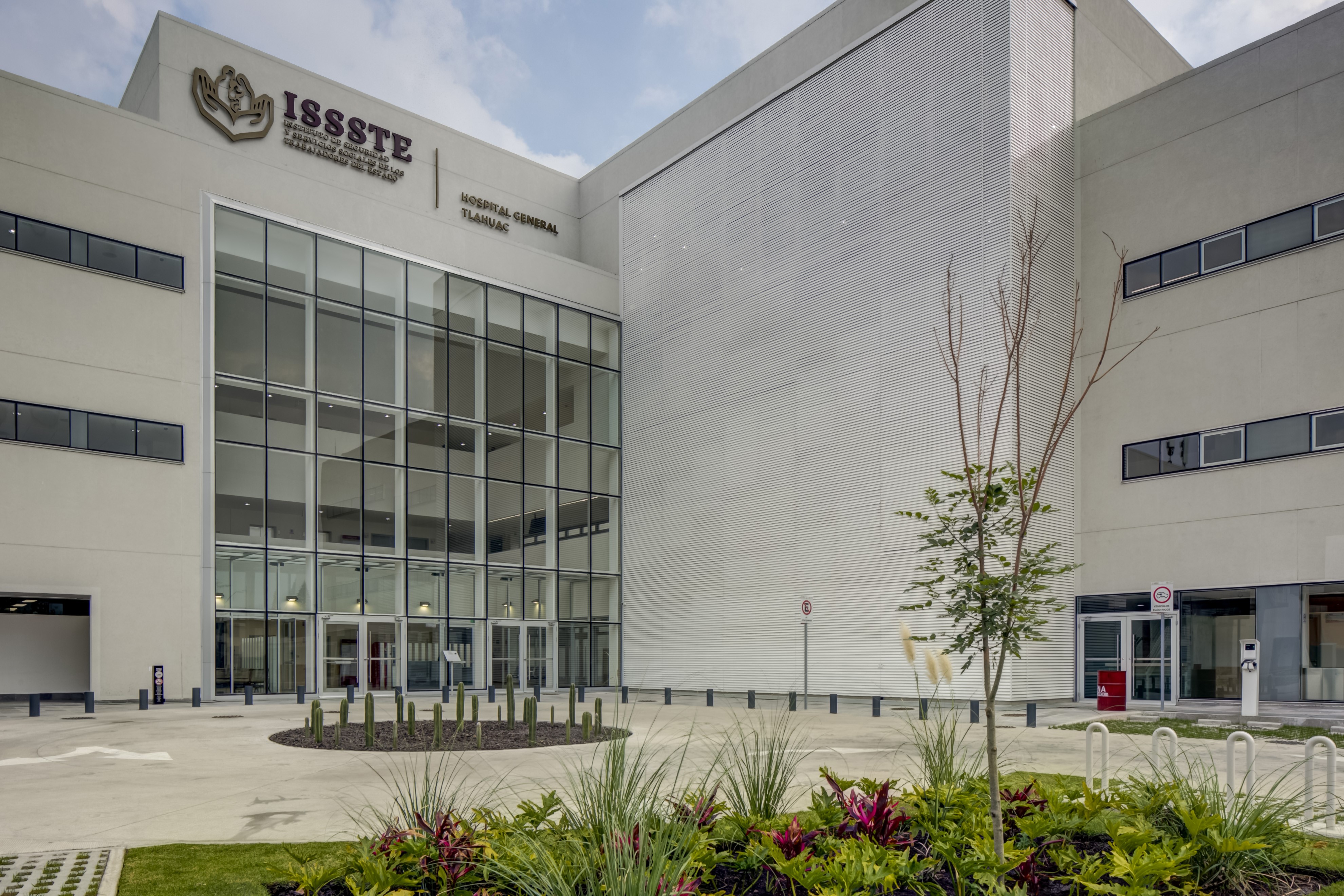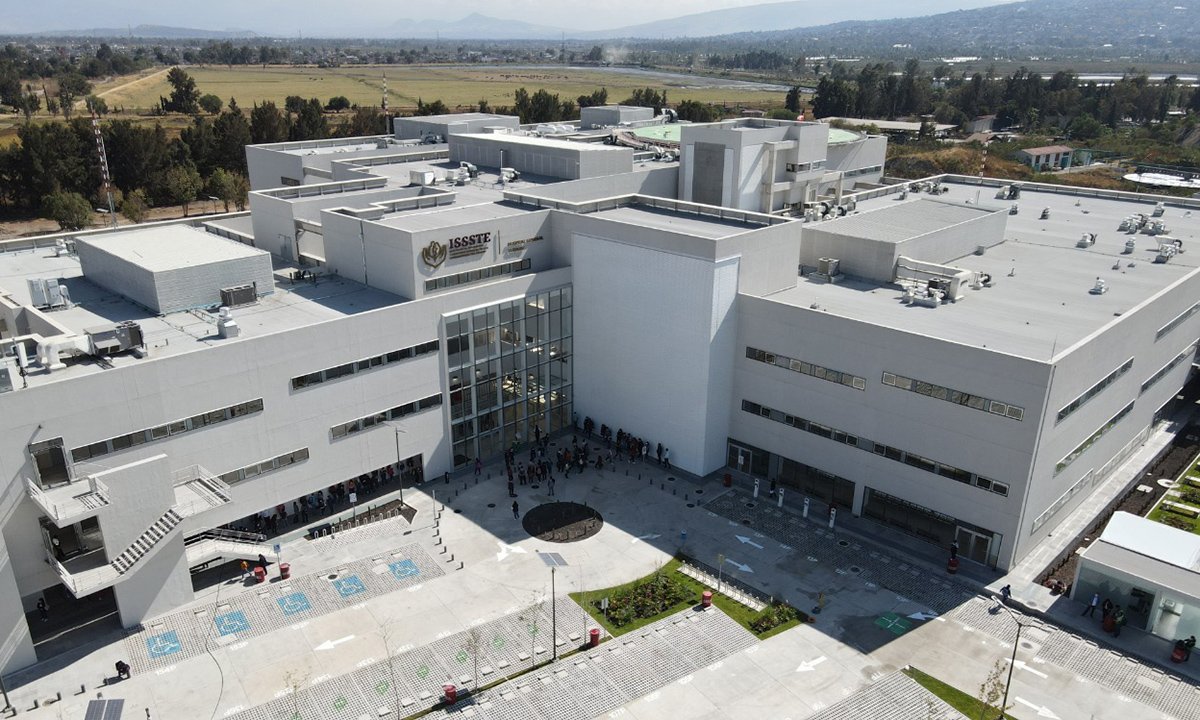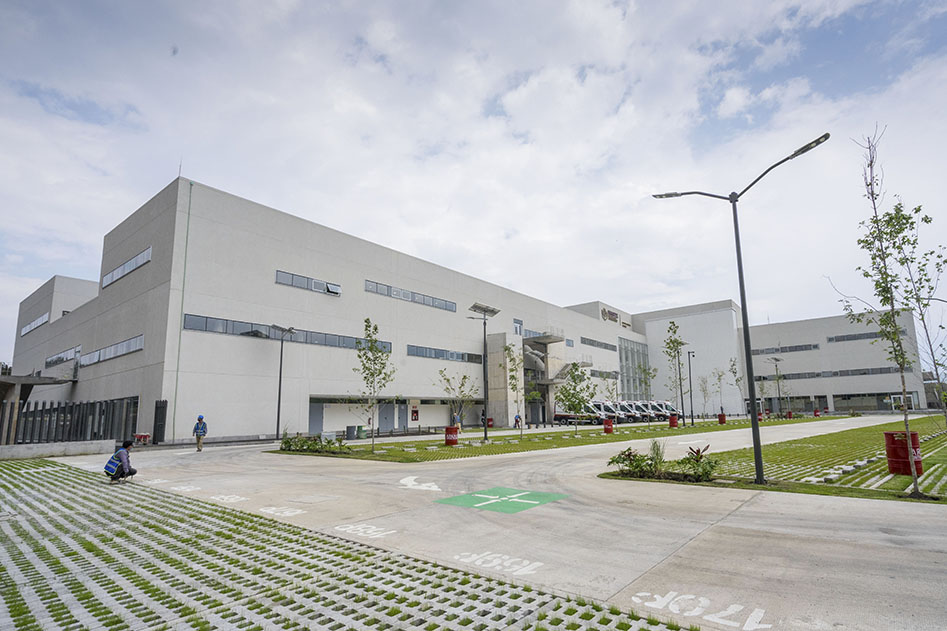The Tlahuac Hospital in Mexico City is the first seismically isolated hospital in the city. For this project, MAURER supplied 243 bearings (isolators) with three different features.
A brief overview of the project. Mexico City is not actually located in a seismically active zone but is built on the former lake territory. This means that this area is mainly characterized by clay soil with a high water content. Therefore, an average earthquake in this area corresponds to a strong earthquake in neighboring ones. The soil deficiencies were addressed through seismic isolation of the structure.
The Tlahuac Hospital is built on a durable and huge concrete box. The hospital is completely isolated from the foundation by 243 bearings (isolators) with a diameter of 850 mm.
The study and calculations related to seismic isolation have confirmed that the bearings are not required to ensure displacement of 1-1.2 m. As a result, it was decided to limit the displacement to 400 mm. Given the location, this displacement of the structure was considered sufficient.
The elastomeric body of the bearings withstands a vertical load of up to 50,000 tons while ensuring the possibility of horizontal movement and helping the structure return to its initial position after an earthquake.
In the summer of 2020, the structure successfully withstood a 7.5 magnitude earthquake without any issues or damage.
A brief overview of the project. Mexico City is not actually located in a seismically active zone but is built on the former lake territory. This means that this area is mainly characterized by clay soil with a high water content. Therefore, an average earthquake in this area corresponds to a strong earthquake in neighboring ones. The soil deficiencies were addressed through seismic isolation of the structure.
The Tlahuac Hospital is built on a durable and huge concrete box. The hospital is completely isolated from the foundation by 243 bearings (isolators) with a diameter of 850 mm.
The study and calculations related to seismic isolation have confirmed that the bearings are not required to ensure displacement of 1-1.2 m. As a result, it was decided to limit the displacement to 400 mm. Given the location, this displacement of the structure was considered sufficient.
The elastomeric body of the bearings withstands a vertical load of up to 50,000 tons while ensuring the possibility of horizontal movement and helping the structure return to its initial position after an earthquake.
In the summer of 2020, the structure successfully withstood a 7.5 magnitude earthquake without any issues or damage.



